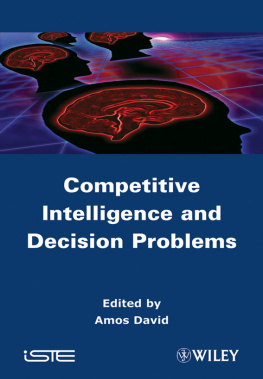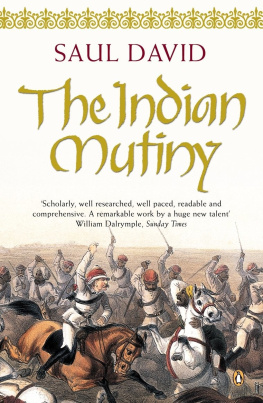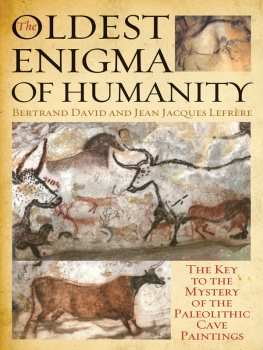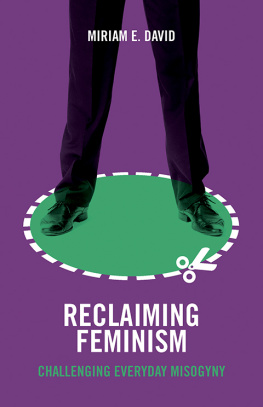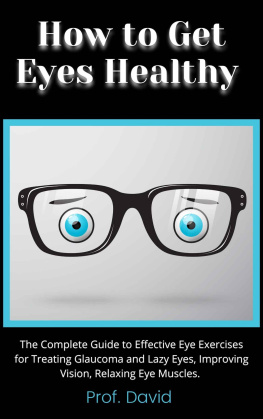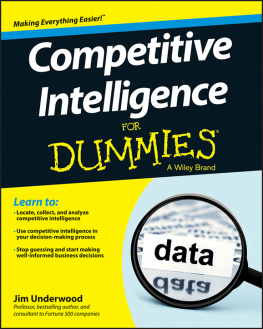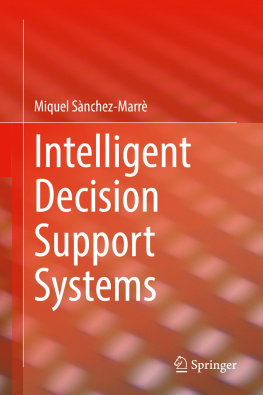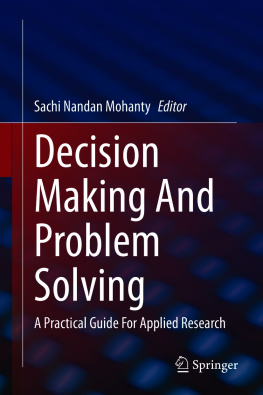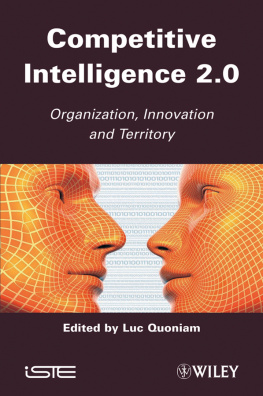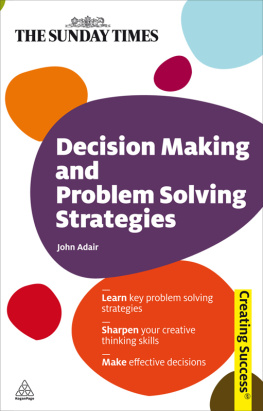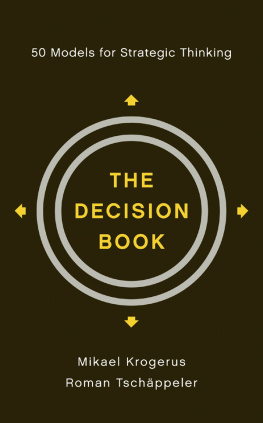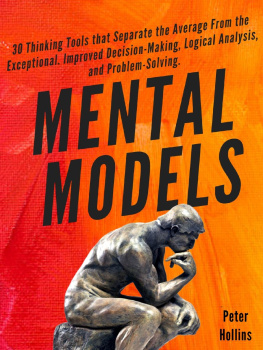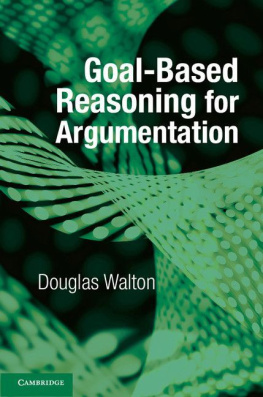Table of Contents
First published 2011 in Great Britain and the United States by ISTE Ltd and John Wiley & Sons, Inc.
Apart from any fair dealing for the purposes of research or private study, or criticism or review, as permitted under the Copyright, Designs and Patents Act 1988, this publication may only be reproduced, stored or transmitted, in any form or by any means, with the prior permission in writing of the publishers, or in the case of reprographic reproduction in accordance with the terms and licenses issued by the CLA. Enquiries concerning reproduction outside these terms should be sent to the publishers at the undermentioned address:
ISTE Ltd
27-37 St Georges Road
London SW19 4EU
UK | John Wiley & Sons, Inc.
111 River Street
Hoboken, NJ 07030
USA |
| www.iste.co.uk | www.wiley.com |
ISTE Ltd 2011
The rights of Amos David to be identified as the author of this work have been asserted by him in accordance with the Copyright, Designs and Patents Act 1988.
Library of Congress Cataloging-in-Publication Data
Competitive intelligence and decision problems / edited by Amos David.
p. cm.
Includes bibliographical references and index.
ISBN 978-1-84821-237-4
1. Business intelligence. 2. Decision making. I. David, Amos.
HD38.7.C6593 2011
658.472--dc23
2011019568
British Library Cataloguing-in-Publication Data
A CIP record for this book is available from the British Library
ISBN 978-1-84821-237-4
We model constantly in the course of everyday life: for each entity we encounter, be it an object, a person, or a process, we create an associated mental image that enables us to give meaning to its existence and behavior. As Valry states in [VAL 77], we only think using models. A model is a formal representation of an object or a set of associated phenomena, which we attempt to circumscribe. It may be seen as an analytical tool used to describe, in a reduced and formalized manner, a particular observed object. In this way, the model acts as an intermediary between the object and the questions we ask to understand the object. Thus, the value of the model resides not in its reality, but in its use to explain a given object or a set of phenomena: it takes on a heuristic role in the process of generating knowledge about a given object.
We thus see that the concept of models is part of a simplification/abstraction dichotomy, containing aspects of both symbolic representation and reduction of the complexity of the observed object. However, although the model is only a partial representation of this object, or of a certain reality of the object (which implies that a large number of possible models exist for a given object), it enables us, in relation to our aims, to reduce this reality to a limited number of viewpoints that are intelligible and coherent for the modeler. For this reason, an intentional aspect is always present in the creation of a model. Modeling is a subjective activity, involving choices to which the user commits himself/herself. Another expression of this duality is given by Nouvel, who describes modeling as a negligence strategy [NOU 02]. Negligence, or the fact of not taking certain aspects of the object into account, is used intentionally to highlight other aspects of this same object. Depending on the refinement of the initial information at the base of the construction of the model, the model will appear, according to Terrasse [TER 05], as the result of a sophisticated strategy or as a form of negligence controlled by abstraction or simplification. Thus, the model plays a triple role, being subjective, projective, and intentional.
However, depending on the construction of the model and the aims of the user, a model may give a simplified or idealized vision of the reality being represented. For example, a model in the fashion sense of the term is chosen because he/she represents an ideal form, albeit one which is not representative of the average human physique. According to Thom [THO 03], it is thus easy, through excessive idealization or simplification, to pass from model use into the realm of magical thinking. Depending on the degree of freedom allowed, the model may evolve and may be perceived in very different ways. Care is needed to avoid confusing properties of the model with those of the real world, particularly in the context of competitive intelligence where digital artifacts, approximations, extractions, and data visualizations are frequent sources of errors and illusions.
Although a model is, by its very nature, simplistic and fake, it allows us to find answers to certain questions. A model is put to use through a process of questioning and testing. This process shows up misunderstandings and inadequate formulations that force us to reconsider the model, to look for other interactions, and/or plan new processes of observation. A main positive attribute of the model is the fact that it is a construct. Thus, we do not seek to know whether the model is right, but to analyze its contribution to a process of understanding (and in our particular context, mutual understanding between a watcher and a decision maker) the object constituted by the decision-making problem. Does this mean, then, that a good model is a useful model? This is what we will attempt to demonstrate in this chapter, showing the usefulness of a model-based approach in the process of transforming and resolving a decision problem in the context of information gathering.
In the context of this resolution, the watcher acts as the modeler of his/her own activities, both in determining what actions are necessary for the resolution of the information problem and in reducing their cognitive load, which, thanks to a support model, may be concentrated on the essential, but also because the information problem is itself a model of the larger decision problem. This model, created by the watcher, acts as an intermediary, as a pivotal document, and as a support for social and cognitive exchanges between the watcher and the decision maker and between all actors and the model. The resolution of the decision problem will not involve comings and goings between actors and the real world, but follows a more complex pattern of three-way interactions between the actors, the model, and the context of the problem.
Based on Roys work [ROY 85], we define the assistance provided by the watcher in resolving the decision problem in the competitive intelligence process as the activity which, based on clearly defined but not necessarily completely formalized models, helps us to obtain aspects of a response to questions posed by the decision maker in this process, to work together to clarify or simply to favor a behavior in a way that increases the coherence between the evolution of resolution on the one hand, and the aims and preference system of the decision maker for whom the watcher is working on the other hand.
The model that we will now present aims, in addition to promoting the transition from a decision problem to an information-gathering problem and the various comings and goings involved (as the problem does not have a single final definition), to act as an event memory, as past events and analogy play an important role in the decision process. In designing the model, we have aimed to remain as close as possible to Ockhams principle, that is, to avoid needless multiplication of elements of the model, while striving to be as faithful as possible to Boileaus formula in describing the model.

